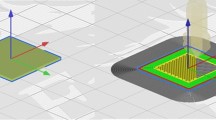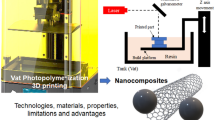Abstract
Controlling solder paste volume significantly influences printed circuit board bonding. Applying an improper amount of solder paste during the printing process can cause circuit issues, such as an incomplete circuit with insufficient paste and short circuit with excessive paste. These defects can result in high repair cost or over-usage and wasting of solder paste. Therefore, the appropriate solder paste volume should be determined to ensure the quality of printed circuit board assembly and reduce cost. The solder paste printing problem can neither be classified as larger-the-better, nor smaller-the-better. The problem is a range issue. The operating window is a means to solve such problem. This study applies the operating window methodology to identify an optimal condition to maximize the operating window range. A real case study was presented to confirm the effectiveness of the method. The implementation result achieves a noticeable reduction of 15.9% in the mean usage volume of the solder paste, whereas the standard deviation of the solder volume ratio was reduced by 13.42%. The annual cost saving was expected to reach approximately USD 565,122.




Similar content being viewed by others
References
Pan J, Tonkay GL, Storer RH, Sallade RM, Leandri DJ (2004) Critical variables of solder paste stencil printing for micro-BGA and fine-pitch QFP. IEEE Trans Electron Packag Manuf 27(2):125–132
Huang JCY (2010) Reducing solder paste inspection in surface-mount assembly through Mahalanobis-Taguchi analysis. IEEE Trans Electron Pack Manufac 33(4):265–274
Tsai T-N (2008) Modeling and optimization of stencil printing operations: a comparison study. Comput Ind Eng 54(3):374–389
Montgomery DC, Keats JB, Perry LA, Thompson JR, Messina WS (2000) Using statistically designed experiments for process development and improvement: an application in electronics manufacturing. Robot Comput Integr Manuf 16(1):55–63
Clausing D (1994) Total quality development: a step-by-step guide to world class concurrent engineering. ASME Press, New York
Peace CS (1993) Taguchi methods. Addison-Wesley, MA
Taguchi G, Chowdhury S, Wu Y (2005) Taguchi’s quality engineering handbook. Wiley, NJ
Fowlkes WY, Creveling CM (1995) Engineering methods for robust product design. Addison-Wesley, MA
Su C-T (2013) Quality engineering: off-line methods and applications. CRC Press/Taylor & Francis Group, FL
Joseph VR, Wu CFJ (2002) Operation window experiments: a novel approach to quality improvement. J Qual Technol 34(4):345–354
Acknowledgements
This work is partially supported by the grant from the Ministry of Science and Technology, Taiwan, ROC.
Author information
Authors and Affiliations
Corresponding author
Rights and permissions
About this article
Cite this article
Su, CT., Hsu, CC., Yang, T. et al. Optimization of Solder Volume in Printed Circuit Board Assembly Through an Operating Window Experiment—A Case Study. Exp Tech 41, 309–316 (2017). https://doi.org/10.1007/s40799-017-0168-3
Received:
Accepted:
Published:
Issue Date:
DOI: https://doi.org/10.1007/s40799-017-0168-3




